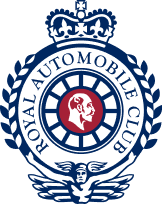The Heritage Fleet
The Club’s Heritage Fleet, based at Woodcote Park, provides an authentic glimpse into Britain’s motoring history. These patrol vehicles of the past allow a unique insight into the roots of the Club going back to the dawn of motoring.
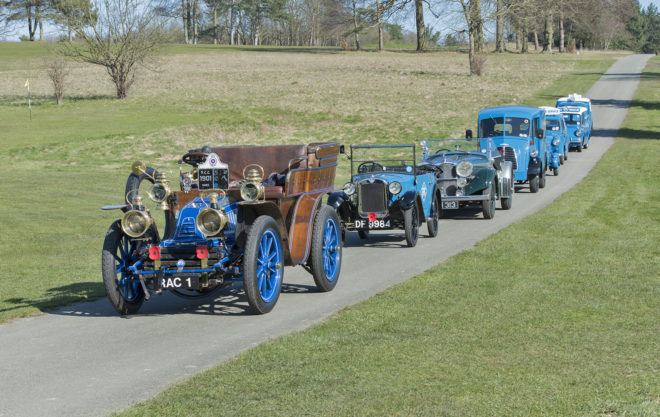
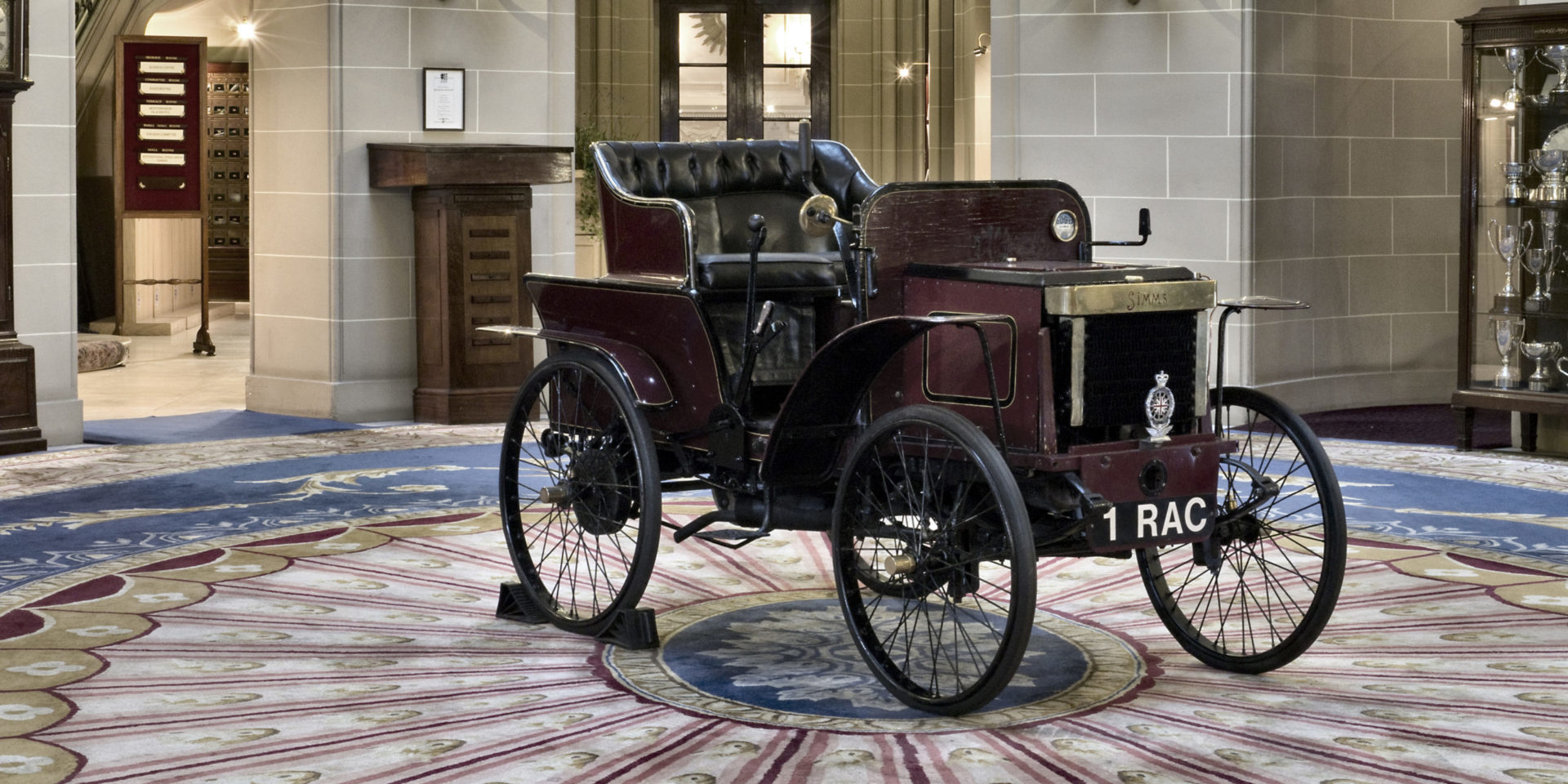
Simms 1900
The Club’s Simms 1900 was built by the Royal Automobile Club’s founder Frederick Simms and it is the oldest veteran car in the Club’s collection. In recent years it has completed the London to Brighton Veteran Car Run four times.
This car is believed to be a prototype built by Frederick Simms. Although no documentary evidence exists to confirm its precise age, construction suggests that it is of pre-1900 manufacture. The vehicle is primitive and probably did not run much when new. It was cosmetically restored by the Simms Company in 1960.
The tiller steering and solid tyres are a challenge for the driver ‒ but the passenger has the short straw, needing to dismount for steeper hills, or to assist with manoeuvres since the car lacks a reverse gear.
With the original engine long since discarded, the car has been mated with a later Simms stationary engine, of 1902 construction. Capable of about 15mph on the open road, it has a capacity of 780cc and is rated at a nominal 6hp. Transmission is an axle-hung, two-speed, constant-mesh gearbox or final drive unit, which is chain-driven from a countershaft.
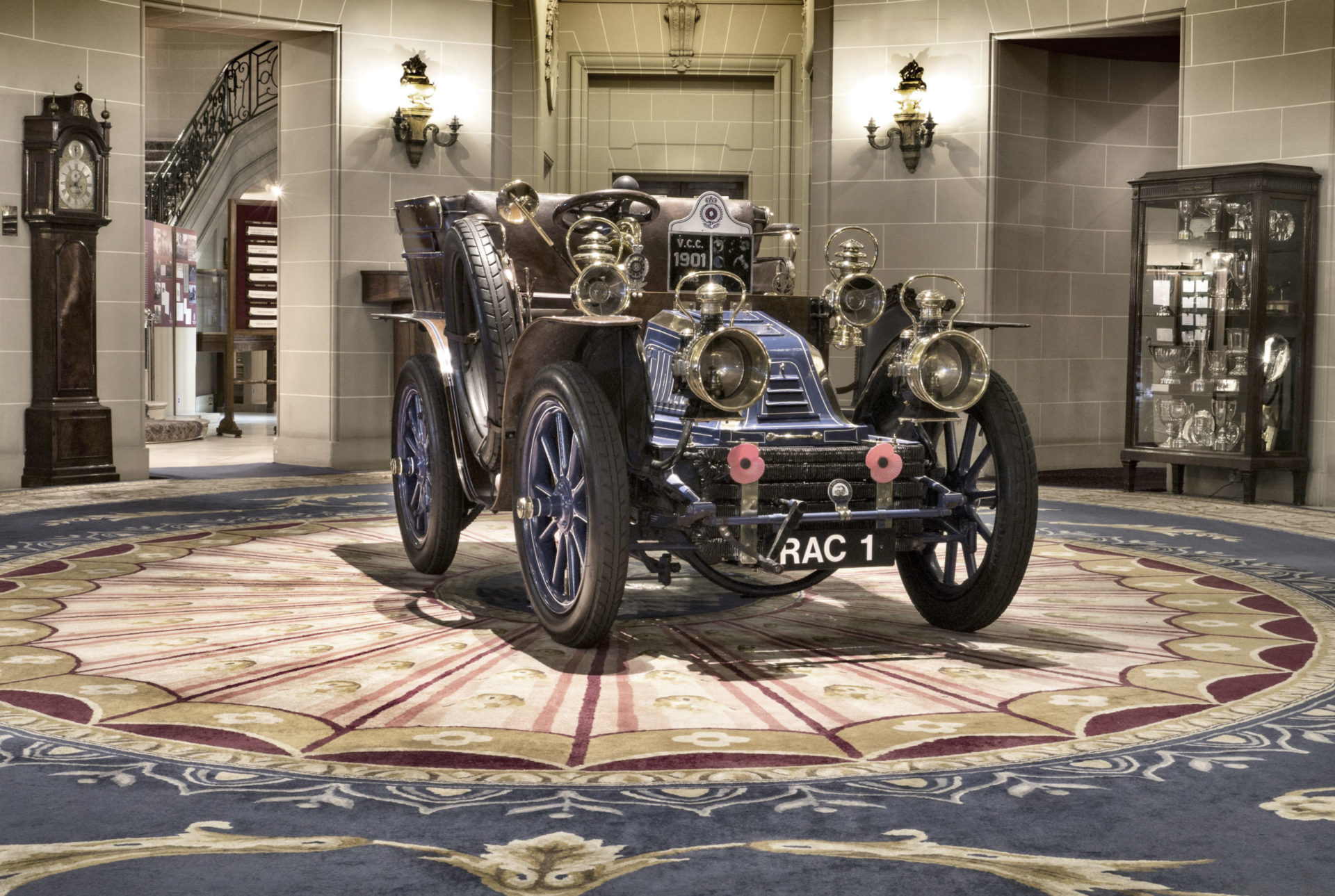
Mors 1901
The Mors Tonneau was produced in France in 1901 by the Mors Company and registered to Mssr Ruilliard Fernand in September of that year. After his death the car was sold by his son and acquired by Mr S E Sears in 1937 as an addition to his car collection in England.
The Royal Automobile Club purchased the Mors from the Sears family in the early 1980s. The Club has, over a number of years, carried out extensive work on the car to preserve it, maintaining the fine and usable condition you see it in today. It was repainted in the Club blue and re-registered RAC1 in the late 1980s (the Simms 1900 bears 1 RAC). The Mors has completed more than twenty London to Brighton Veteran Car Runs.
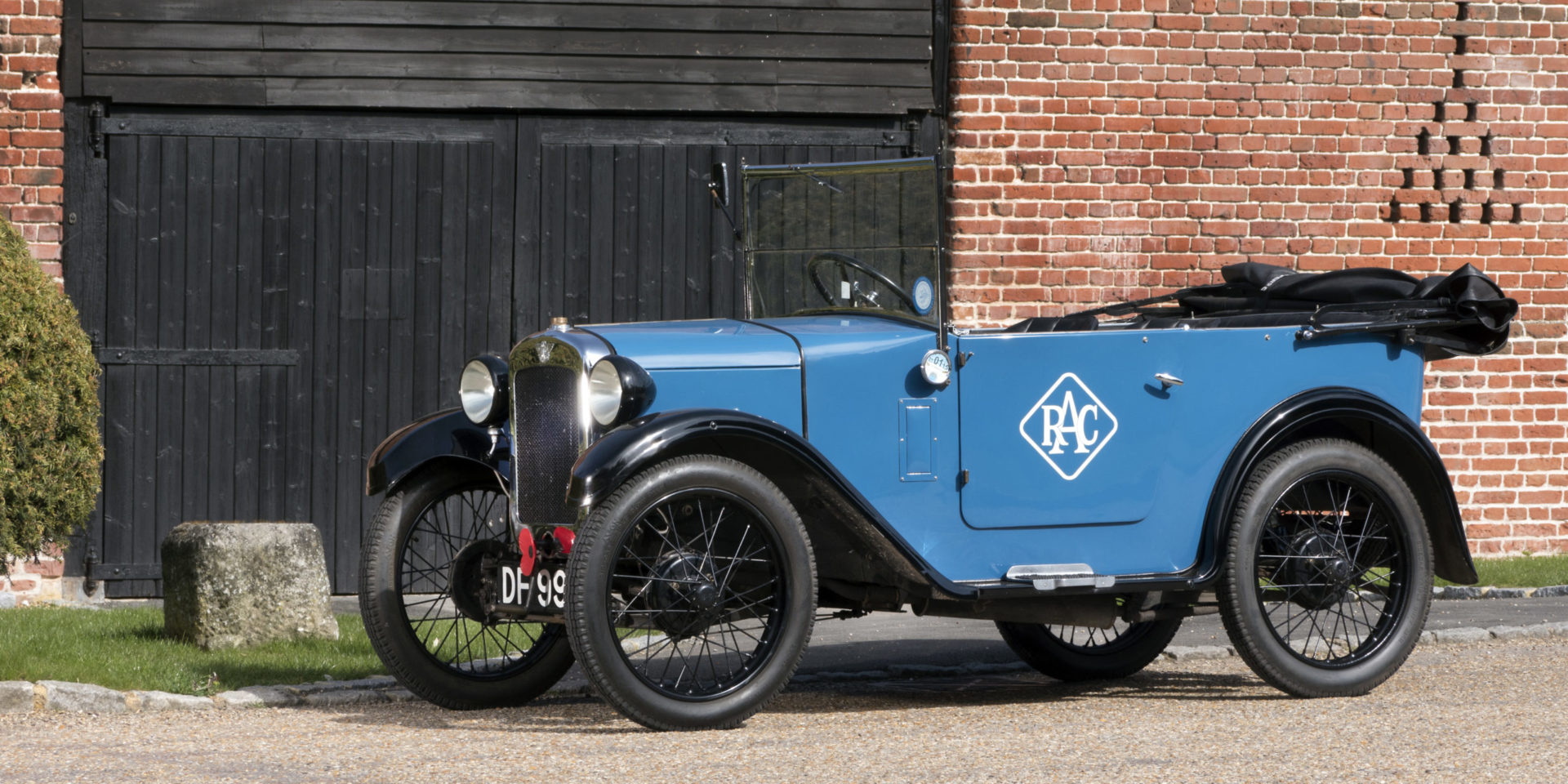
Austin Seven Tourer 1930
The Austin Seven Tourer, affectionately called the ‘Chummy’, was manufactured from 1922 to 1939. It was marketed as an affordable car for ordinary families. By 1923 the car cost £165.00 to buy ‒ equivalent to £5,000 today. Our Chummy is powered by a 750cc, three-speed engine. The RAC logo, folding roof and traditional bodywork mean the vehicle is authentic to the last detail.
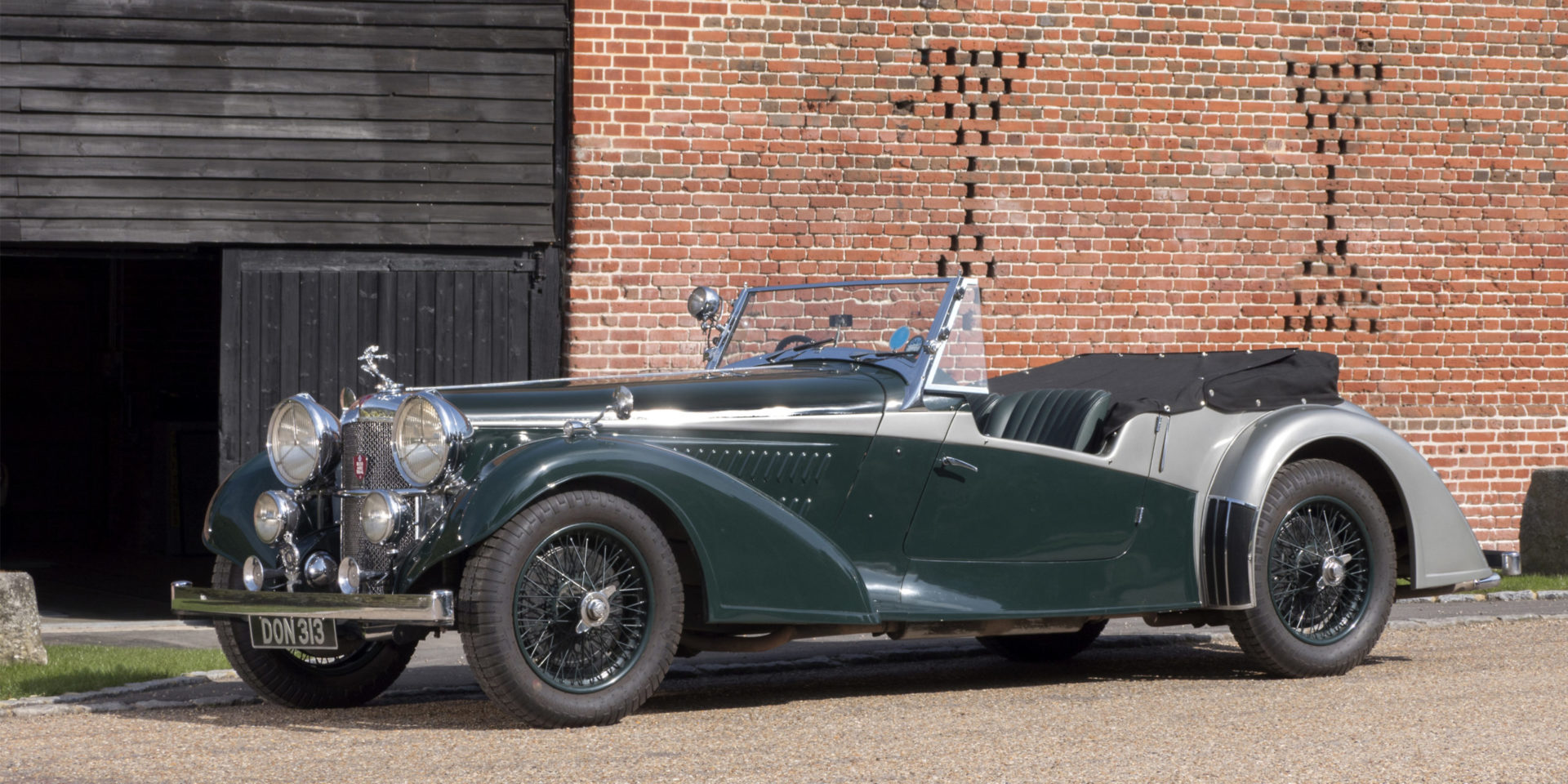
Alvis 4.3 ‘Short Chassis’ Tourer 1938
Often confused as the ‘Speed 25’ model, with which it shares a chassis, the Royal Automobile Club’s Alvis is in fact a 4.3 ‘Short Chassis’ Tourer with Vanden Plas body. This is a rare combination since just twelve were built, although eleven are known to survive.
Competitively priced at £995 when new, the 4.3 was cheaper than its rivals: the Lagonda Rapide at £1,050 and the Bentley 4¼ Litre at £1,535. With an advanced specification, and superb handling and performance, the car could rightly be described as the supercar of the 1930s, with a maximum speed of 103mph and producing 137bhp at 3,600rpm.
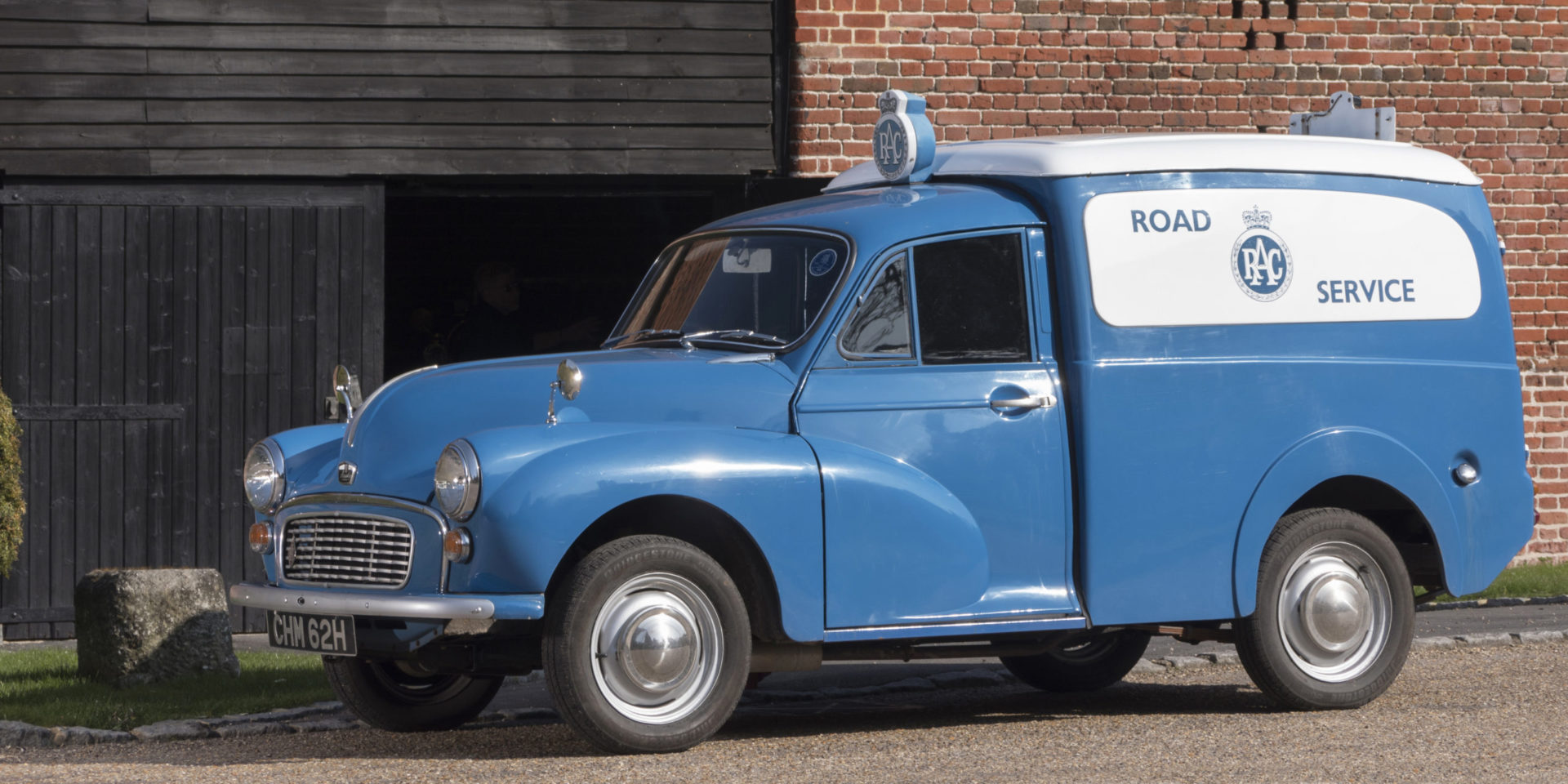
Austin Morris 1000 Van 1969
The 1,100cc Austin Morris 1000 Van was used from 1969 to 1973 to serve the home counties.
The badge on the roof was illuminated for improved visibility and a two-band radio was also a technological feature.
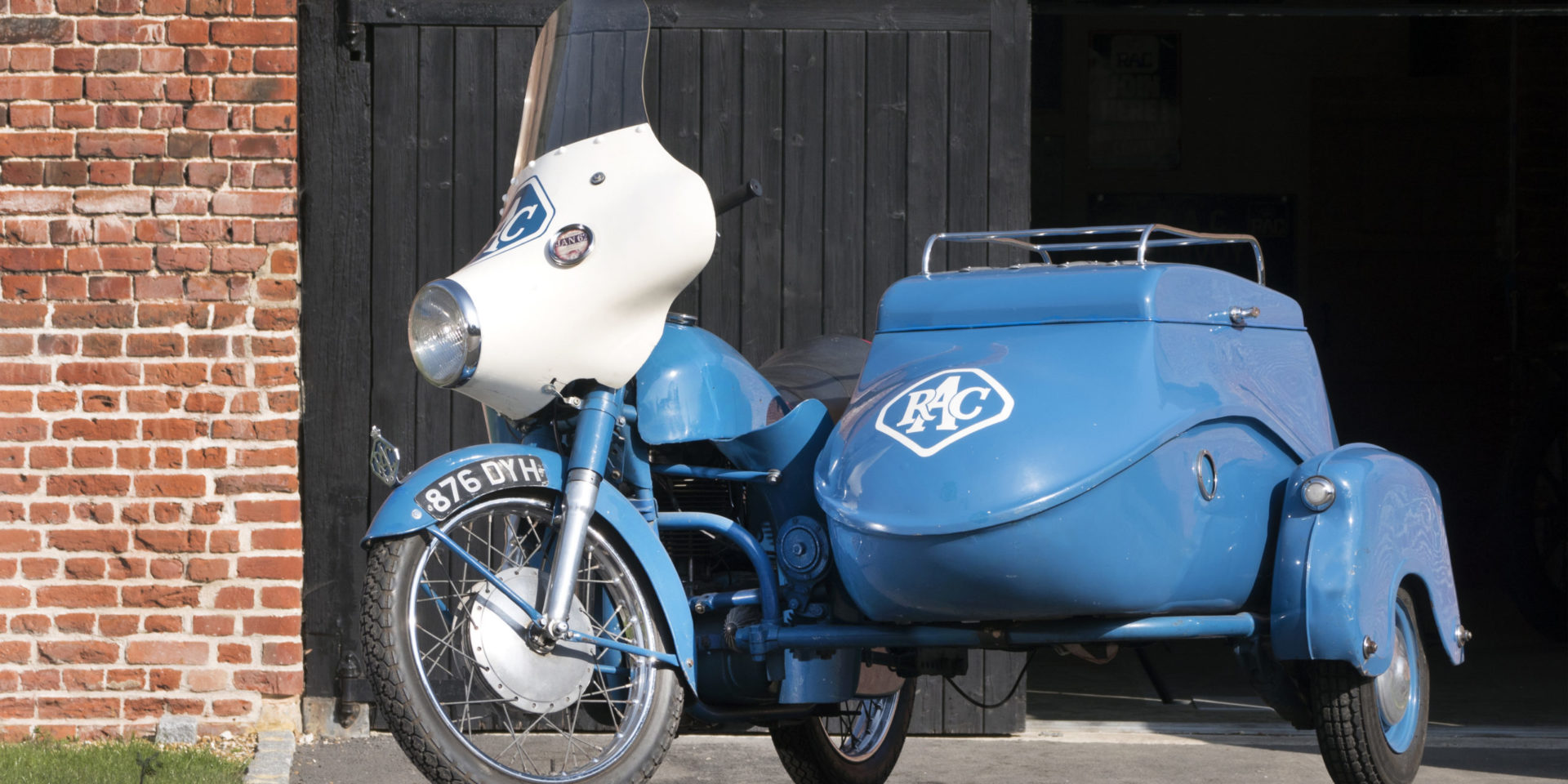
Norton ES2 Motorcycle Combination 1961
This classic three-wheeler evokes memories of a bygone era with its traditional colours and livery. First produced in 1927, the ES2 was the mainstay of the RAC patrol service. It was a long-stroke single engine originally launched as a sports motorcycle. The ES2 proved popular for RAC patrols due to its reliability and ease of maintenance.
The Club’s 1962 motorcycle features telescopic front forks, swinging-arm rear suspension and the famed featherbed frame coupled to a fibreglass sidecar, which was phased out in the 1960s with the arrival of the minivan. It had a capacity of 490cc and produced 25bhp. The last Norton ES2 was produced in 1964.
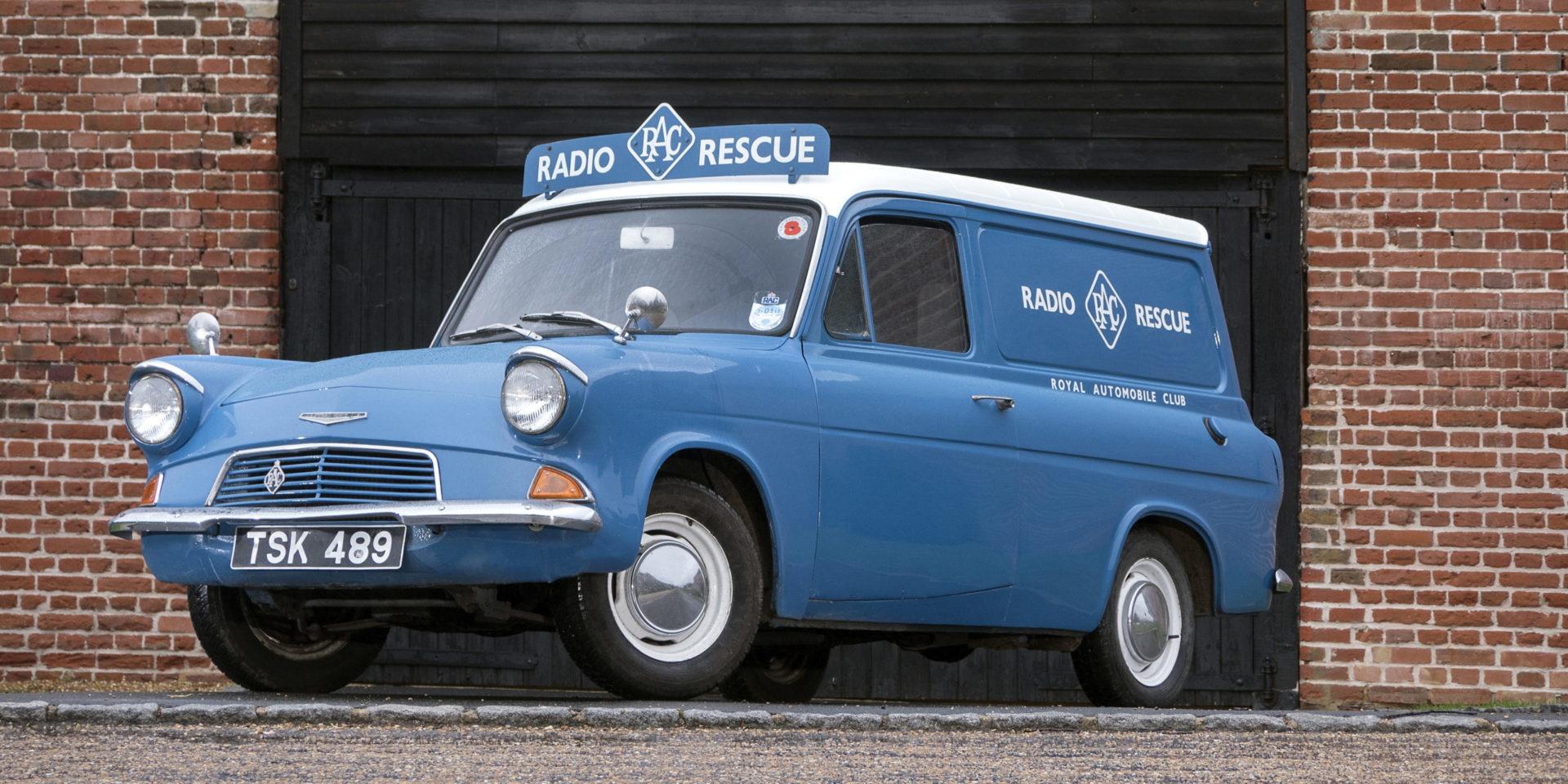
Ford Anglia Van 1961
The Ford Anglia van with RAC patrol livery was a familiar sight on Britain’s roads from 1961 to 1967. For passengers, it had a spacious interior and the vehicle was very reliable. It had a 1,198cc petrol engine and a four-speed gearbox.
From the 1970s the patrols also extensively used Ford Transit Mark 1 vans because of their flexible space. Ford Transit combinations with trailers, alongside Bedford vans and Range Rovers, continued being used for patrols into the 1980s. The introduction of the RAC Vehicle Recovery Service in 1975 resulted in a need for heavier-duty vehicles.
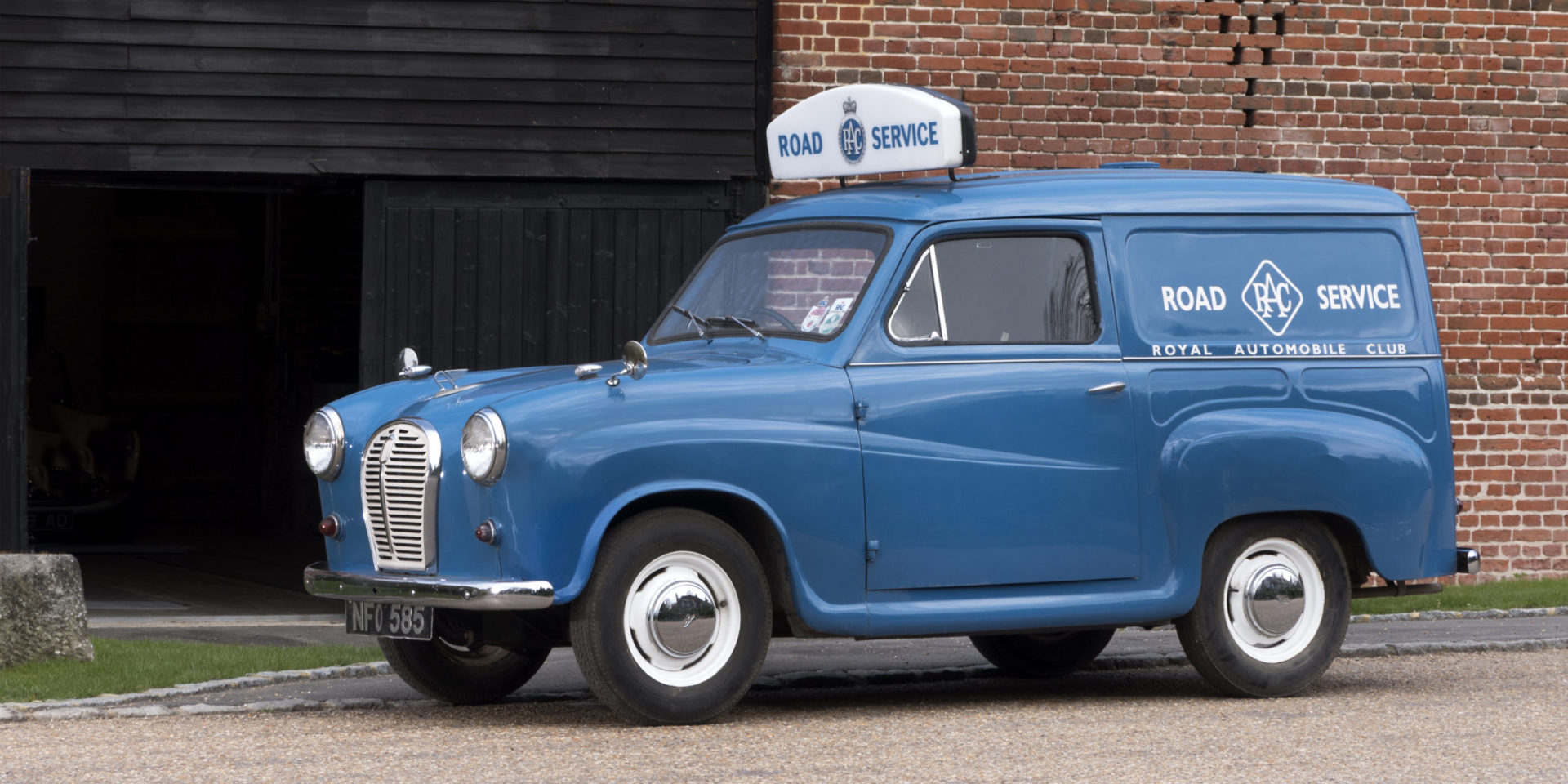
Austin A35 Van 1960
This van would have been a common sight in its heyday, with its large, illuminated sign, classic livery and A35 grille. The RAC used these vehicles from 1960 to 1967. Allocated to patrols, signage officers and supervising officers, the Austin A35 van was one of the four-wheeled vehicles used to replace motorcycle combinations. Many of the Austin A35 vans were fitted with two-way radios and they had 948cc engines.
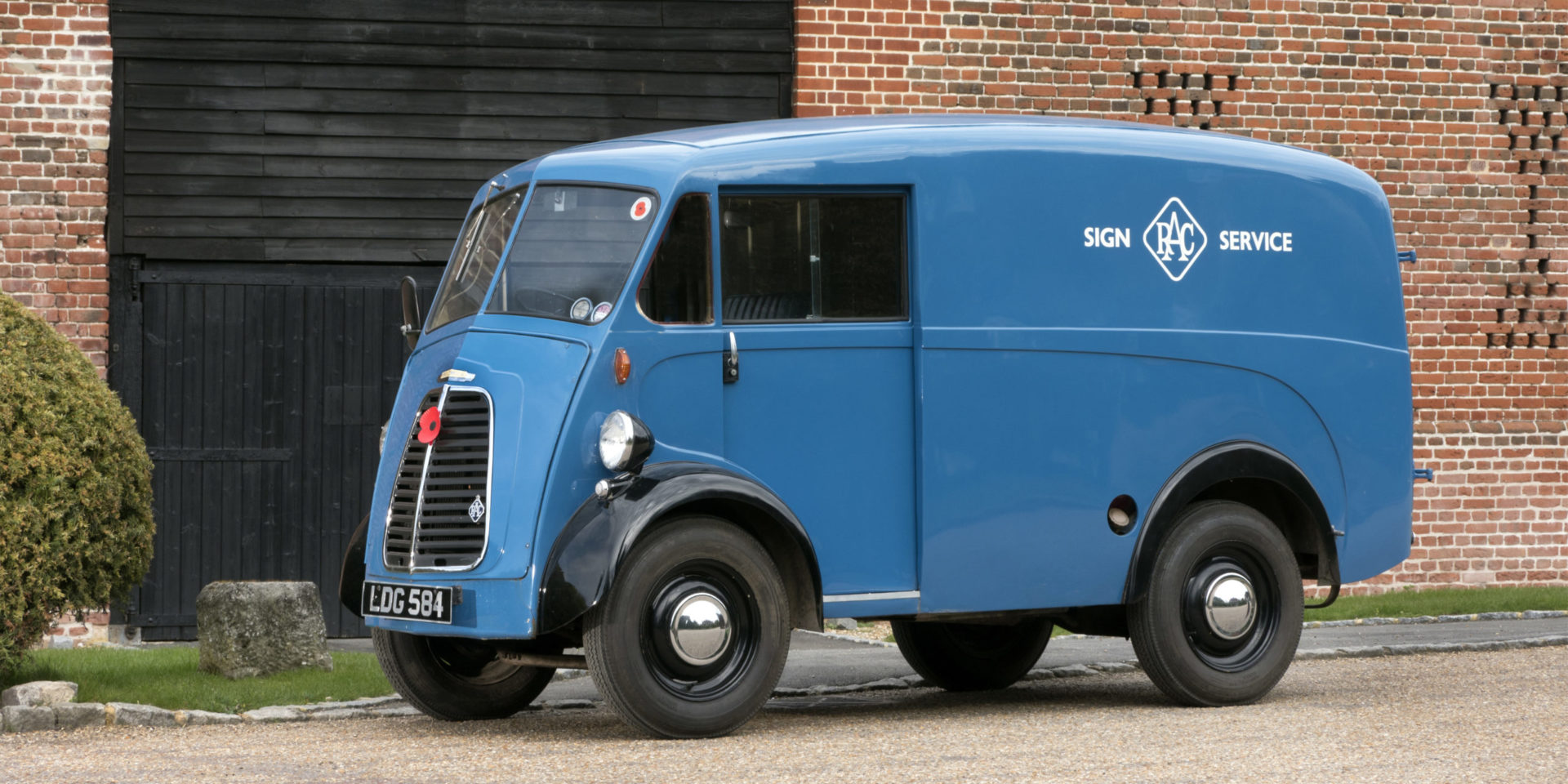
Morris J-Van 1952
The RAC used the Morris J-type from 1949 to 1954 for both the signage and the road patrol departments. RAC area offices were limited to one four-wheeled vehicle each because the Second World War had resulted in a shortage of vans. The Morris J-van had a 1,500cc petrol engine and manual gears, but it was the sliding doors with easy access that made the van popular with RAC staff.


